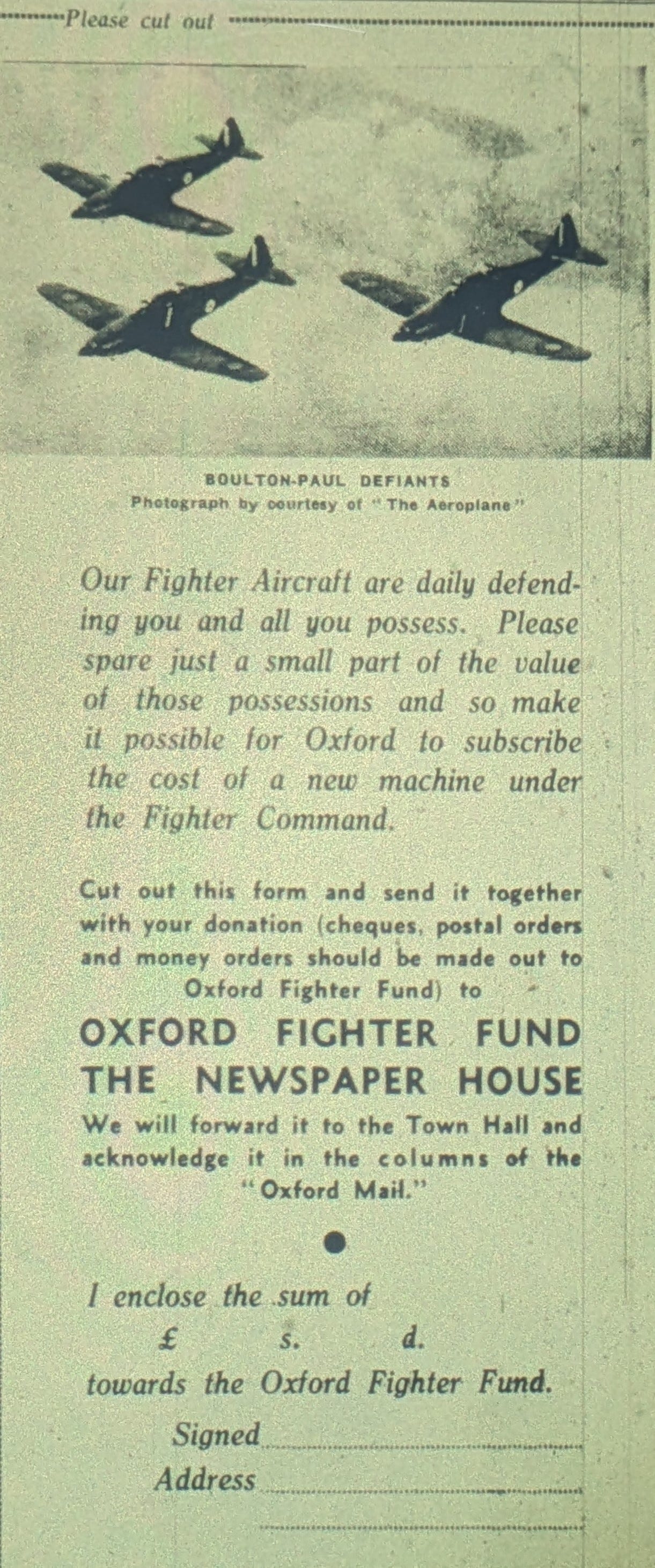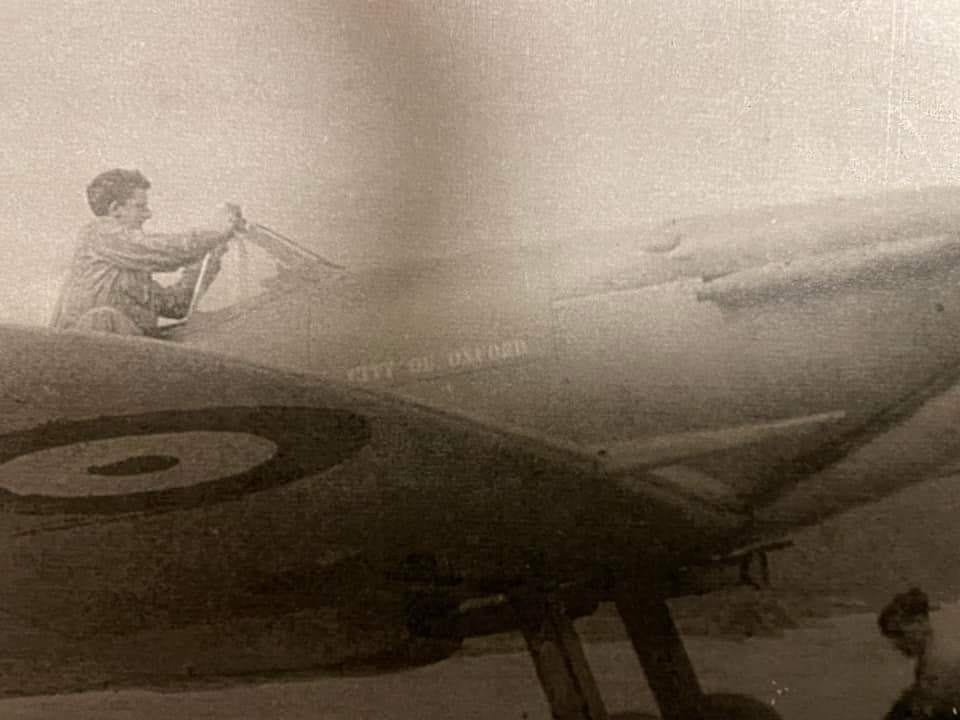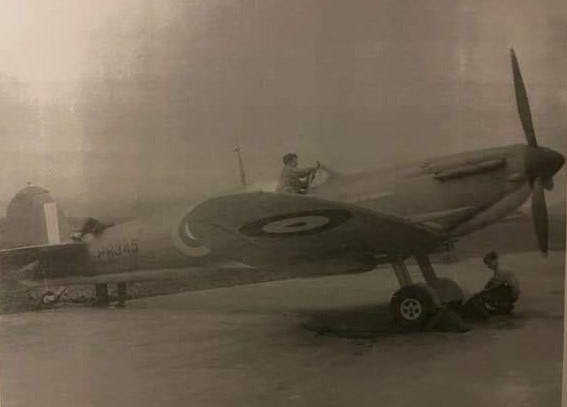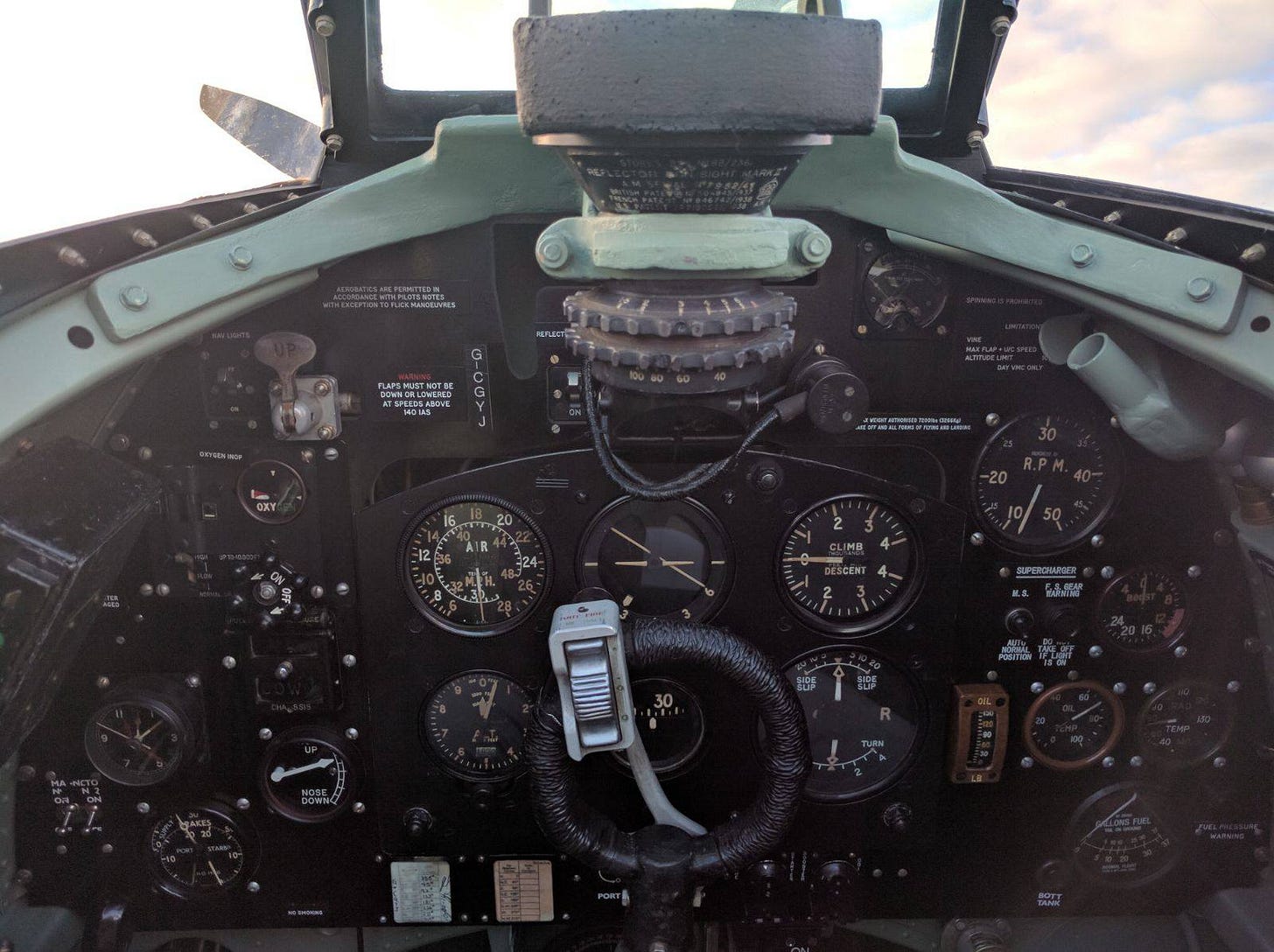How Oxford raised £350,000 in just ONE month to buy a Spitfire
The Oxford Fighter Fund was launched in July 1940 with a rallying cry for support from the local newspaper
It is a long forgotten story of extraordinary generosity by the people of Oxford.
In just five weeks in the summer of 1940, ordinary folk from across the city clubbed together to raise a monumental £5,000 – about £350,000 in today’s money – to help build a Spitfire for the war effort.
More than 80 years later, this mind-blowing feat has been virtually lost to time, with barely a mention anywhere online.
Untold Oxford decided to spend a day in the local archives to put that right.
Following the disaster at Dunkirk, and with the Battle of Britain now raging overhead, the Minister for Aircraft Production, Lord Beaverbrook, launched a public appeal to help build new fighter planes for the RAF.
It was a gamble. People were already contributing immense sums for other schemes, including National War Bonds to provide what one newspaper advert described as “the crushing force of ships, planes and weapons that will cleanse the world of Nazi terror”.
Then there was the Service Comforts Fund to buy clothes and equipment for troops serving abroad.
But the newly launched Fighter Funds captured the public’s imagination, no doubt buoyed by patriotic press coverage of our brave boys’ heroism against the Luftwaffe - and the dreadful prospect of German victory in the sky paving the way for a seaborne invasion of Britain.
Funds sprang up across the country, with a nominal target of £5,000, even though the true cost of a Spitfire, for example, was double that. Individuals, businesses and communities who hit the target could have their name proudly emblazoned on the side of the plane.
Oxford City Council announced its support for a local Fighter Fund on Monday, July 15, following a suggestion from the Headington branch of the Amalgamated Society of Woodworkers.
But the next day there was confusion and frustration about who was administering the scheme.
A column in the Oxford Mail said:
“Since the announcement yesterday that the City Council would support an Oxford fund for buying a fighter plane for the nation, several people have asked me who is organising the fund and when will it get underway.
“So far nothing seems to have been done about the matter, and it is high time that steps were taken to launch the scheme. Other places have already left us far behind.
“I see today that Worcester has already raised £8,000 and has promised Lord Beaverbrook another £2,000 which, added to the previous amount, will buy two fighters.”
The Mail clearly decided someone needed to take charge, and by Friday, July 19, forms were being printed in its pages urging people to send donations to Newspaper House, in New Inn Hall Street. The money would then be forwarded to the town hall.
A rousing editorial, headlined ‘Hurry Up With the Fighter!’ issued a rallying cry to readers to do whatever they could:
“How much can a single citizen of Oxford afford to give towards the fighter? The vast majority of Oxford people will surely wish to send whatever they can to the Fighter Fund now opened at the Town Hall?
“Whenever you read of an air battle over country or coast, remember that you can do your bit towards giving our men in the air the very best machines.
“Some of the essential materials for aeroplane construction can only be bought from abroad with hard cash, and we must find the cash.
“If Worcester could raise £8,000, surely Oxford can do the same! Let us have our Oxford fighter, helping in the defence of Britain, in double-quick time.”
A “warm response” meant that by 4pm on Monday, July 22, the fund stood at £115 following 11 donations, including £50 from Beatrice Macdonald, of The Hythe Croft, Eynsham, £25 from Hicks & Son, of Ferry Hinksey Road, and £21 from M J Anderson, of The Snack Bar, 23 George Street.
The Mail declared:
“The spontaneity of their gifts indicates the generosity of the givers, and is a fine encouragement for the future of the fund.
“Will every reader please help to spread the news of this appeal? We would like to get Oxford’s fighter into the air at once.”
The following day the fund had more than doubled to £250, and by the end of the first week on Monday, July 29, it stood at £615.
A “fine example” was set by the residents of Catherine Street, Cowley, who collected £1 7s 9d, while staff at Cowley Road Hospital pledged 6d a week each for the duration of the appeal.
A fishing competition was held in Radley, a women’s darts tournament was staged at the Abingdon Arms while a Home Guard XI took on an Air Raid Wardens XI in a cricket match at St Edward’s School.
Children at St Christopher’s School in Cowley handed over £5 while Chief Inspector A Clarke, of Oxford City Police, sold models of a Gloster Gladiator and an Avro Tutor that he had built.
By August 3, the fund had topped £1,200, including a donation from ex-Hungary Prime Minister Mihaly Karolyi, now living in Crick Road, Oxford, in memory of his son who had died in an air training accident.
Although officially named the Oxford Fighter Fund for a non-specific plane, it soon became apparent that the money would be for a Spitfire, firing people’s desire to contribute even more.
Over the next three weeks the total soared to over £4,000, with “donations pouring in” all the time, and by August 26, the magical £5,000 mark had been reached, including a donation of £65 from the patrons of Headington Cinema.
To celebrate, more than 1,000 of Oxford’s civil and military defenders, including members of the Oxfordshire and Buckinghamshire Light Infantry, the Auxiliary Territorial Service, the Women’s Auxiliary Air Force, and Oxford Fire Brigade, paraded through Oxford, collecting a further £167 in the process.
The following day, the Oxford Mail reported:
“The original goal was £5,000 - the price of a Spitfire - and a cheque for this amount was dispatched by the Mayor to Lord Beaverbrook.
“Actually, however, the donations from the opening of the fund five weeks ago up to last evening, totalled £5,400 - this, of course, exclusive of the collection made during last night’s procession of the defence forces.
“It has been decided to bank, on deposit, all the money in excess of £5,000, and this sum will ultimately go towards the purchase of a second fighter.
“Although some people may be disappointed that the fund is not being kept open until sufficient money is raised to buy another Spitfire, it should be realised that there are many other causes equally deserving support.”
And in its daily new bulletin on September 2, the Ministry of Information declared that the Spitfire would be called ‘City of Oxford’.
Oxford Mayor, Cllr Clement Bellamy, later published a letter, saying:
“It was with pleasure, and not a little pride at this achievement, that I was able to send a cheque to Lord Beaverbrook.
“In a case of this sort, I suppose thanks are hardly necessary, but nevertheless I should like all subscribers, whether of large or small amounts, to know how much I appreciate the enthusiastic manner in which they supported this project.
“The activities of the City of Oxford fighter plane will, I am sure, have all our good wishes for success and safety.
“It is right that I should take this opportunity of thanking those members of the council and other public spirited people who assisted in one way or another to obtain the sum required, and there is no doubt that the special interest played in the appeal by the Oxford Mail and the Oxford Times contributed very largely to its success.”
P8345 - The ‘City of Oxford’ Spitfire
Built at Castle Bromwich in Birmingham in 1941, the ‘City of Oxford’ was a Mark IIB fitted with a 1,175hp Merlin engine, giving it a top speed of 354mph.
It had full armour protection, including the windscreen, and was armed with four 7.7mm Browning machine guns and two 20mm Hispano cannons.
The installation of cannons gave the MkIIB a greater chance of bringing down bombers. It would also be a highly effective weapon in a ground attack role for offensive sweeps across northern France.
May 1941 ‘City of Oxford’ was delivered to 222 Squadron, a day fighter unit at Hornchurch in Essex.
August 1941 Relocated to 645 Squadron in Scotland for air defence duties.
November 1941 Moved to 611 Squadron at RAF Drem in Scotland for recuperation.
January 1942 ‘City of Oxford’ came home when it was sent for maintenance at the Civilian Repair Unit in Cowley.
June 1942 Its final home was 61 Operational Training Unit at Rednal in Shropshire, where aircrew were prepared for operations. It was here that ‘City of Oxford’ was involved in three accidents, the last of which would sadly seal its fate.
On June 14, it collided with another Spitfire during take-off from Montford Bridge Aerodrome, and was repaired on site.
On July 27, it hit a tree avoiding a Hawker Hurricane at Huxley in Cheshire and was again repaired.
On March 26, 1943, its luck finally ended when it ran out of fuel and overturned following a belly-landing at Rednal. Engineers initially thought it could be saved, but it was written off and scrapped the next month.
In total, 1,400 Fighter Funds were set up across the UK, raising more than £13 million - that’s almost £1 BILLION in today’s money.
Among them was Banbury, which launched its Spitfire Fighter Fund in August 1940 to come “into line with cities and towns across the country.”
The sum of £12 was raised at a dance in Hook Norton while pupils at Dashwood Road School raised £32 through competitions and collections.
The Banbury Master Butchers’ Association gave £25; Banbury Gaslight and Coke Company £5, and a whist drive by the Union of Catholic Mothers provided £15.
By the end of September the fund stood at £1,220, and by the end of October it was over £2,000.
One of the highlights was a downed Messerschmitt going on display in Castle Wharf in November. People were charged 6d to take a look in what the Banbury Advertiser described as “an opportunity not to be missed”. That event raised £40 alone.
A week before Christmas the fund stood at £2,500. The fund closed in March 1941 having topped £3,000 - unfortunately not enough to have a Spitfire named after the town, but very respectable nonetheless.
The Banbury Advertiser said:
“There has been some disappointment that the original aim of £5,000 has not been realised, but it is recognised that there are increasing claims on the public, and it was felt advisable to send such monies as were in hand and close the fund.
“It will be seen that the total represents an average of approximately £100 per week throughout the entire period during which the fund has been running - no mean achievement to suggest.”
READ MORE: GHQ Line: The last-line of defence in our own backyard














